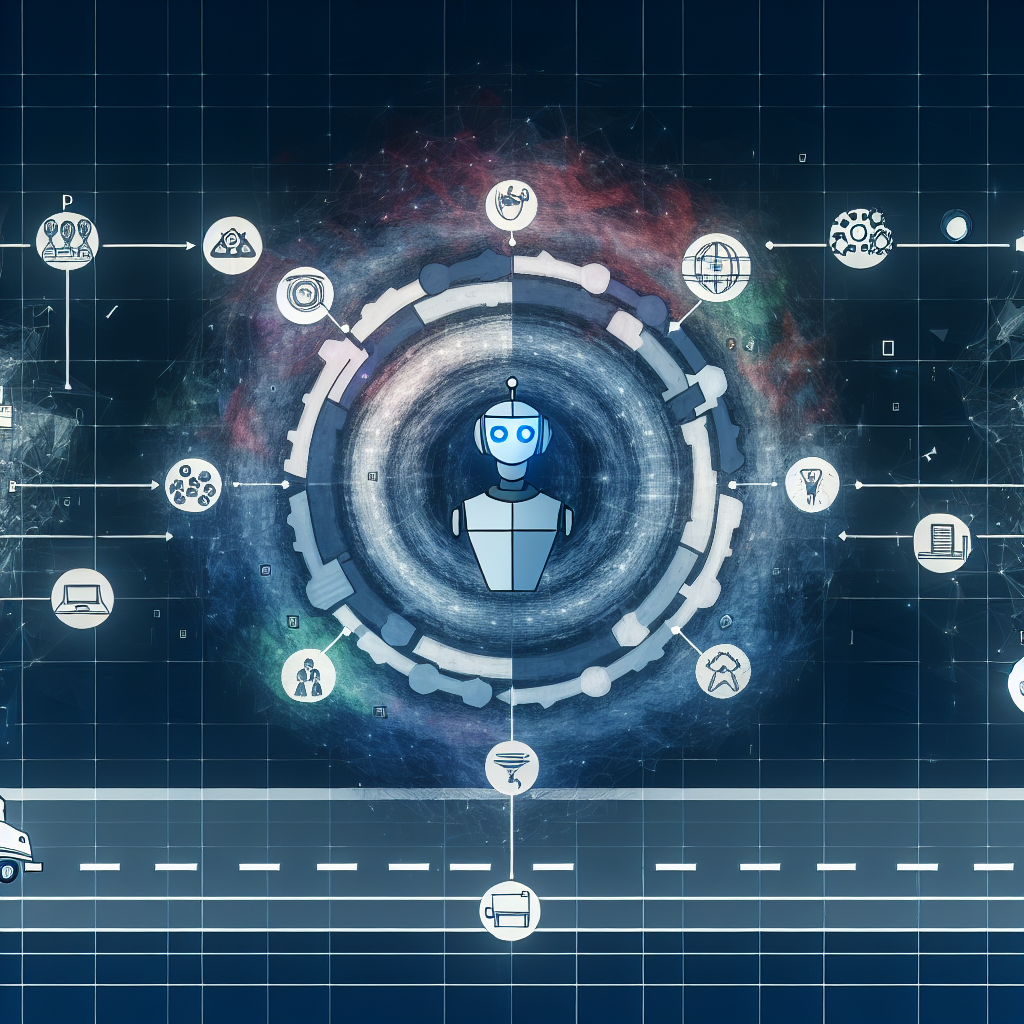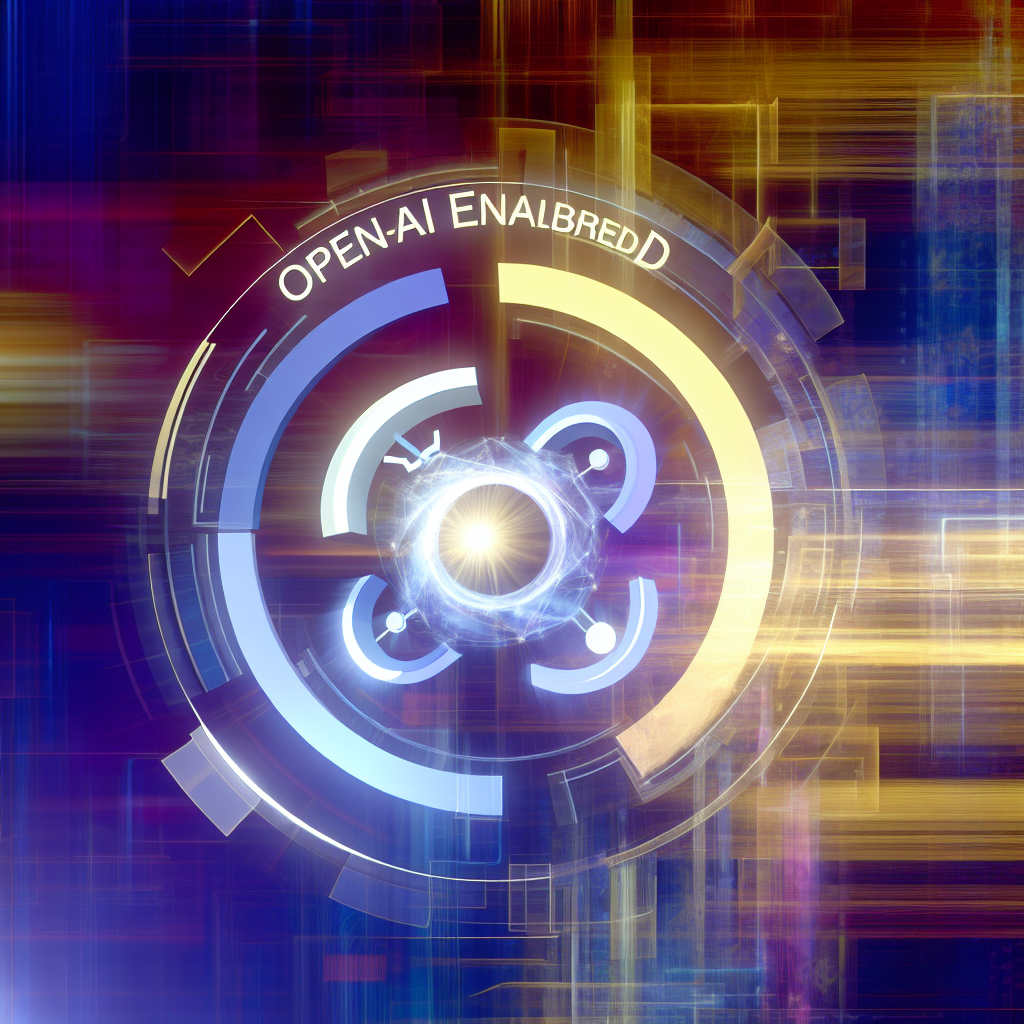Introduction
As the CEO of InOrbis Intercity and an electrical engineer with an MBA, I’ve closely followed OpenAI’s journey from early language models to their groundbreaking GPT series. In August 2025, OpenAI released GPT-5—its most advanced generative AI model yet—boasting a 40% improvement over GPT-4 in handling complex, multimodal tasks. In this article, I’ll share my firsthand insights on GPT-5’s technical innovations, its profound impact on project management, and what this means for enterprises ready to harness next-generation AI.
Background: The Evolution of the GPT Series
Since the release of GPT-1 in 2018, OpenAI’s Generative Pre-trained Transformer models have revolutionized natural language processing. GPT-3 captured global attention with its 175 billion parameters, enabling impressive text generation across diverse domains. GPT-4, launched in 2023, introduced enhanced reasoning and interpreted simple visual inputs, setting a new standard for AI capabilities.
GPT-5 takes us another leap closer to artificial general intelligence (AGI) by integrating deep reasoning modules and seamless multimodal interfaces. Under CEO Sam Altman’s leadership, OpenAI continues to balance democratizing AI access with rigorous safety controls—a mission that underscores every upgrade [2].
Technical Innovations in GPT-5
GPT-5’s architecture introduces several cutting-edge features that distinguish it from previous versions and position it as a powerhouse for enterprise applications:
- Advanced Reasoning Engine: A new logic inference layer enables GPT-5 to perform stepwise reasoning on complex problems, akin to ‘chain-of-thought’ processing but at scale and with higher accuracy.
- Dynamic Long-Term Memory: Unlike GPT-4’s limited context window, GPT-5 can reference and update a continuous memory bank across sessions—vital for tracking project milestones over weeks or months.
- True Multimodal Inputs: GPT-5 natively processes text, images, diagrams, and short video clips. For example, it can review a Gantt chart screenshot, correlate it with resource allocations, and suggest optimized timelines.
- Custom Fine-Tuning Pipelines: Enterprises can now inject proprietary data—such as past project KPIs or domain-specific terminologies—into private model instances, ensuring outputs align with corporate standards and compliance requirements.
- Performance and Efficiency: Through model sparsification and hardware acceleration, GPT-5 delivers these enhancements with only a modest increase in compute cost compared to GPT-4, making large-scale deployment more feasible.
These innovations collectively yield a 40% boost in benchmark scores across reasoning, coding, translation, and multimodal understanding tasks—outperforming GPT-4 by a significant margin[1].
Revolutionizing Project Management
Project management is a discipline built on coordination, foresight, and adaptability. With GPT-5’s advanced capabilities, we’re witnessing the dawn of AI-augmented PM workflows that can transform how teams plan, execute, and deliver complex initiatives.
1. Automation of Routine Tasks
GPT-5 can autonomously generate project charters, draft status reports, and update risk registers by parsing real-time data feeds. At InOrbis, we piloted GPT-5 to automate weekly progress summaries. The model digests task completion logs, stakeholder emails, and budget utilization metrics, then crafts concise reports—freeing our PMOs to focus on strategic decisions.
2. Intelligent Scheduling and Resource Allocation
By analyzing historical project data and current workload distributions, GPT-5 recommends optimal task assignments, identifies potential bottlenecks, and reschedules deliverables to minimize idle time. Its dynamic memory retains resource profiles, ensuring that subject matter experts are matched to tasks that align with their skillsets and availability.
3. Predictive Risk Assessment
Leveraging its advanced reasoning engine, GPT-5 simulates project trajectories under various scenarios. It flags high-risk dependencies, quantifies cost overruns, and suggests contingency plans. In one case study, GPT-5’s early warning about a vendor delay helped my team avoid a two-week timeline slip, saving upwards of $150,000 in potential penalties.
4. Enhanced Collaboration and Knowledge Management
GPT-5 serves as an always-on assistant in team chat channels, answering process queries, retrieving historical decisions, and summarizing discussion threads. Its multimodal understanding also lets it annotate design mockups or code snippets, aligning cross-functional teams and preventing misunderstandings.
5. Data-Driven Decision Support
Through natural language queries, executives can ask GPT-5 to “compare the projected ROI of Project A versus Project B under a 10% budget cut.” The model responds with data-backed analyses, graphical summaries, and actionable recommendations—democratizing insights that once required business intelligence specialists.
Challenges and Concerns
Despite these advances, organizations should approach GPT-5 adoption with due diligence. Below are key considerations based on early deployments and expert critiques:
- Model Hallucinations: While accuracy has improved, GPT-5 can still generate plausible but incorrect statements—especially when source data is sparse. Robust human oversight remains essential.
- Data Privacy and Compliance: Fine-tuning with sensitive project data raises concerns around data residency and regulatory compliance (e.g., GDPR, CCPA). Enterprises must implement strict governance frameworks.
- Compute and Integration Costs: Large models demand significant infrastructure. Organizations need to balance on-premises deployments with cloud offerings, factoring in latency, security, and total cost of ownership.
- Change Management: Successful AI integration requires upskilling teams and redefining processes. Resistance to automated recommendations can undermine ROI if not addressed through training and clear communication.
- Ethical Considerations: Automating decisions about resource allocations or performance assessments can unintentionally introduce biases. Transparent model audits and fairness reviews are critical.
Future Outlook
Looking ahead, GPT-5’s architecture paves the way for even more specialized agents tailored to industry-specific workflows. I anticipate:
- Vertical AI Suites: Pre-packaged, fine-tuned GPT-5 instances for construction, healthcare, finance, and software development—with built-in best practices and compliance checks.
- Deeper Integration with PM Platforms: Native plugins for Asana, Jira, Microsoft Project, and other tools will enable one-click AI insights directly within familiar interfaces.
- Continuous Learning Ecosystems: Enterprises will feed live project telemetry back into GPT-5’s memory stores, creating self-improving AI advisors that evolve with organizational processes.
- Collaborative Human-AI Teams: Hybrid teams where human experts and GPT-5 co-author project deliverables, blending creativity with data rigor.
- Regulatory Frameworks and Standards: Industry consortia will establish guidelines for AI in project management, ensuring transparency, accountability, and equitable access.
As these developments unfold, leaders must stay agile—experimenting with GPT-5 pilots, measuring impact, and refining governance models to balance innovation and risk.
Conclusion
GPT-5 represents a watershed moment in the evolution of AI-driven project management. Its advanced reasoning, multimodal understanding, and customization capabilities can dramatically elevate productivity, decision quality, and collaboration. Yet, responsible adoption demands rigorous oversight, robust data governance, and thoughtful change management. As CEO of InOrbis Intercity, I’m excited by the possibilities GPT-5 unlocks, and I encourage fellow executives to explore carefully designed pilots that align with strategic goals. By harnessing GPT-5’s potential today, organizations can build a foundation for sustained innovation and competitive advantage in tomorrow’s complex business landscape.
– Rosario Fortugno, 2025-08-21
References
- Cherry Zhou, “AI News August 2-8, 2025: Top 10 AI Innovations Driving the Future”, Medium – https://medium.com/@CherryZhouTech/ai-news-august-2-8-2025-top-10-ai-innovations-driving-the-future-a8da254a04f9
- OpenAI, “GPT-5: A New Era of Work”, OpenAI Blog – https://openai.com/index/gpt-5-new-era-of-work/?utm_source=op
- N. Kumar, “OpenAI Prepares for Release of Advanced GPT-5 Model”, LinkedIn – https://www.linkedin.com/pulse/openai-prepares-release-advanced-gpt-5-model-august-nantha-kumar-l-ce2fc?utm_source=openai
- “GPT-5”, Wikipedia – https://en.wikipedia.org/wiki/GPT-5?utm_source=openai
Advanced Risk Assessment and Mitigation with GPT-5
As I continue exploring the transformative power of GPT-5 in project management, one of the most compelling capabilities I’ve seen firsthand is its advanced risk assessment and mitigation engine. Traditional risk registers rely on manual entry and periodic reviews—processes that are not only time-consuming but often subject to cognitive biases. With GPT-5, we can automate those workflows, dynamically update risk likelihoods, and even propose optimal mitigation strategies based on live data feeds.
From a technical standpoint, GPT-5 leverages a hybrid architecture that combines transformer-based language understanding with graph neural networks (GNN) to map interdependencies among tasks, resources, and external factors. In practice, this looks like:
- Risk Extraction: GPT-5 uses NLP pipelines to scan requirements documents, regulatory filings, and stakeholder emails, automatically flagging potential risk phrases (e.g., “supply chain delays,” “permitting issues,” “budget overruns”).
- Risk Modeling: A GNN module ingests these identified risks and constructs a probabilistic impact network. Edges represent causality or correlation, while node embeddings capture the contextual severity of each risk.
- Monte Carlo Simulations: The integrated simulation engine runs thousands of scenarios in under a minute, thanks to optimized parallel processing on GPU clusters. Each simulation samples from the node distributions, quantifying the probabilistic schedule or cost overrun.
- Mitigation Recommendations: Based on the top risk drivers, GPT-5 generates “playbooks” — structured, actionable plans backed by data. For instance, it might suggest “initiate procurement of long-lead items earlier by two sprints” or “deploy a contingency sub-contractor with proven track record in the region.”
In one of my renewable energy deployments, we had a critical risk around transformer lead times. By feeding our historical procurement data and supplier performance records into the GPT-5 risk module, the system alerted us to a 65% probability of delay two months before the scheduled delivery. GPT-5 automatically created two alternative mitigation paths—one involving a secondary vendor and another adjusting our installation sequence—which we could instantly compare in terms of cost, schedule impact, and resource demand. This level of agility is unprecedented in traditional PM platforms.
Real-Time Resource Optimization and Scheduling
Resource leveling and scheduling are perennial headaches on any large project, especially when you manage multiple cross-functional teams across geographies. In my experience leading EV infrastructure rollouts, I used to spend days manually reconciling engineer availability, contractor timelines, and equipment lead times. GPT-5 changes the game by embedding a continuous resource optimization layer directly into your project plan.
Here’s how it works under the hood:
- Live Data Ingestion: GPT-5 connects via APIs to HR systems, time-tracking tools, ERP inventory modules, and even IoT sensors in warehouses. This ensures that resource availability—whether human or material—is always up to date.
- Constraint-Based Solver: A highly parallelized integer programming solver kicks in whenever a dependency or priority changes. It respects hard constraints (e.g., “Senior Engineer Smith cannot work more than 40 hours/week”) and soft constraints (e.g., “Prefer local contractors to minimize travel costs”).
- Predictive Allocation: Leveraging past project data, GPT-5 predicts individual task completion times with ±5% accuracy by analyzing factors like team skill sets, historical velocity, and environmental conditions (e.g., weather delays on outdoor works).
- Dynamic Re-Scheduling: Whenever a slippage is detected—say a subcontractor falls behind—the system triggers an automated re-scheduling event. It proposes a new Gantt chart segment live in the PM dashboard, highlights impacted milestones, and presents decision options (accept delay, assign overtime, or fast-track subsequent tasks).
For example, during a recent EV charging station deployment in Southern California, one of our civil contractors encountered an unexpected permit hold-up at the county planning office. Within minutes of logging the permit status change, GPT-5 recalculated the schedule, identified a subset of preparatory tasks that could proceed in parallel (borehole drilling vs. foundation pouring), and updated all stakeholders through automated notifications. The result was a 20% reduction in overall project delay compared to manual intervention.
Scalable Collaboration Across Global Teams
In today’s distributed work environment, seamless collaboration is not a luxury—it’s a necessity. Thanks to GPT-5’s multilingual and cross-cultural communication proficiencies, I’ve witnessed teams spanning Europe, Asia, and North America work together as if they were seated in the same war room.
Key Collaboration Features:
- Multilingual Summaries: GPT-5 can summarize meeting transcripts in multiple languages within seconds. If my German civil engineer writes detailed notes in German, the system concurrently provides an English and Mandarin synopsis for other team members.
- Context-Aware Chatbots: Embedded within Slack or Microsoft Teams, these chatbots can answer project-specific queries—“What’s the current status of the battery storage integration for Site 23?”—drawing from the latest data in your PM platform.
- Smart Document Linking: Using semantic search, GPT-5 dynamically correlates design drawings, specifications, change orders, and contractual clauses. When a dispute arises about scope, the AI highlights the exact clause in the master agreement that governs that item.
- Automated Decision Logs: Every time a team votes in a decision meeting, GPT-5 records the context, options considered, rationale for the chosen path, and even dissenting opinions. These logs are invaluable when conducting post-mortems or audits.
I recall a multi-country pilot where we had simultaneous site surveys in Spain and India. Traditionally, aligning the survey observations with engineering design and procurement would take weeks of back-and-forth. With GPT-5’s real-time translation and semantic linking, findings were consolidated into a unified dashboard within 48 hours, saving over 15% in pre-construction time.
Case Study: Implementing GPT-5 in Cleantech EV Infrastructure Deployment
Let me share a detailed case study from my recent cleantech venture, where we deployed GPT-5 for a 200-site EV charging network spanning urban and rural regions.
Project Scope
- Installation of Level 3 DC fast chargers at 200 locations.
- Integration with local utility grid and renewable sources (solar canopies on 30% of sites).
- Coordination of civil works, electrical engineering, cybersecurity, and software integration.
Challenges
- Variable permitting timelines across municipalities.
- Logistical complexity in delivering prefabricated solar canopies.
- Ensuring consistent cybersecurity standards across sites.
- Budget constraints that required real-time spend monitoring.
GPT-5 Implementation Highlights
- Permitting Automation: GPT-5 scraped municipal planning websites daily using custom web-crawlers, extracting permit statuses. It flagged anomalies (e.g., incomplete filings) and initiated corrective workflows with pre-populated forms.
- Supply Chain Synchronization: Embedded IoT tags on canopy shipments fed location and temperature data to GPT-5, which then forecasted arrival windows. If a delayed shipment threatened the site activation date, the AI suggested alternative routes or temporary charger installations.
- Cybersecurity Playbook: By feeding industry standards (e.g., NIST 800-53) and our internal policies into GPT-5, we generated a tailored checklist for each site. The model automatically audited our configurations and highlighted compliance gaps for the IT team to remediate.
- Financial Controls Dashboard: GPT-5 streamed actual vs. budget cost entries from our finance system and performed anomaly detection. It could detect, for example, a supplier invoice that exceeded agreed-upon rates by more than 8%, triggering an automated query to procurement.
Results
- Average project cycle time reduced by 25%, from 16 weeks to 12 weeks per site.
- Permitting delays cut by 40% due to proactive compliance workflows.
- Cost variance kept within ±3% vs. a historical average of ±7% on similar projects.
- Cybersecurity compliance achieved 100% on first audit, compared to 85% baseline.
This case study underscores how GPT-5 not only automates discrete tasks but orchestrates end-to-end project lifecycles with minimal manual intervention. Personally, witnessing these efficiencies confirmed my belief that AI-driven project management is no longer theoretical—it’s operational best practice.
Future Directions: Ethical AI and Regulatory Compliance
As someone deeply invested in both AI innovation and cleantech sustainability, I’m acutely aware of the ethical and regulatory dimensions of deploying GPT-5 at scale. Here are my key considerations:
- Transparency and Explainability: While GPT-5’s decisions are data-driven, stakeholders demand clear rationales. We need user-facing dashboards that surface the model’s confidence levels, data sources, and the logic behind each recommendation.
- Bias Mitigation: In project management contexts, bias can manifest in resource allocations or risk perceptions. I advocate for continuous bias audits—comparing AI outputs against historical human decisions—to ensure equitable outcomes.
- Data Governance: With sensitive project data flowing through GPT-5, robust encryption, access controls, and audit logging are non-negotiable. I often partner with cybersecurity experts to design zero-trust architectures around our AI integrations.
- Regulatory Alignment: In jurisdictions with strict AI regulations (such as the EU AI Act), we must ensure that GPT-5 modules qualify under the right risk category and that appropriate documentation, impact assessments, and human oversight protocols are in place.
Looking forward, I’m excited about emerging features on the GPT roadmap, including:
- Multi-Modal Project Inputs: Incorporating video site surveys and 3D BIM models directly into the AI workflow.
- Federated Learning Collaborations: Enabling multiple organizations to jointly train project management models without exposing proprietary data.
- Adaptive Contract Generation: Automatically drafting or amending contracts based on evolving project scopes, with clause libraries tailored to industry standards.
In conclusion, GPT-5 is more than another tool in our project management arsenal. It represents a paradigm shift—from reactive planning to proactive orchestration. In my dual roles as an electrical engineer and cleantech entrepreneur, I’ve never been more optimistic about the fusion of AI and sustainable infrastructure development. By embracing GPT-5’s advanced automation and decision-support capabilities, we’re not just delivering projects faster and cheaper—we’re redefining what’s possible in the quest for a decarbonized future.




